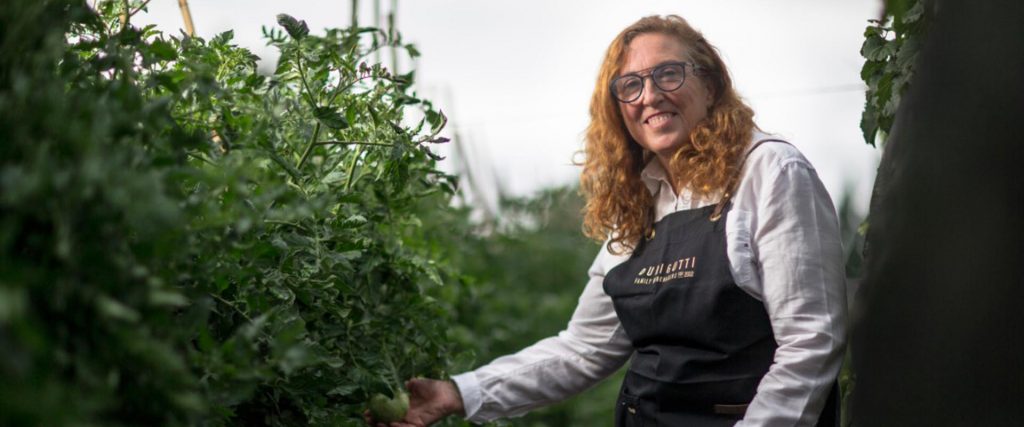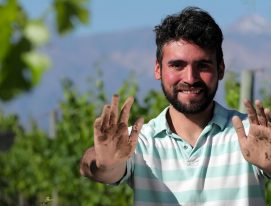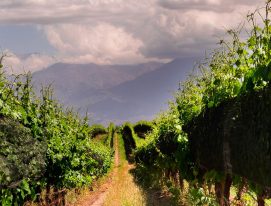Cooking is at the heart of everything that Patricia Courtois does: every new place she visits, every new emotion she experiences and everything that makes her laugh. She has spent years crossing rivers and oceans, climbing mountains and connecting with people and places in different parts of the world. On her way, she has gathered plenty of expertise and shared in life stories that all serve to enrich her bulging library of flavors.
In recent years, her recipes have become closely linked to the world of wine: winery restaurants from terroirs across the country now bear her unique imprint as she provides specially tailored consultancy to different establishments, making her a leading figure in viticultural gastronomy in Argentina.
Today, Patricia Courtois is the executive chef at 5 Suelos Cocina de Finca, the restaurant at Durigutti Family Winemakers, in Las Compuertas, Mendoza. And for several seasons now, she has also consulted for Bodega Colomé in Salta, providing advice on their gastronomic and tourist activities. Meanwhile, she’s in the process of designing the concept for the new restaurant at Bodega Amalaya, also in Salta.
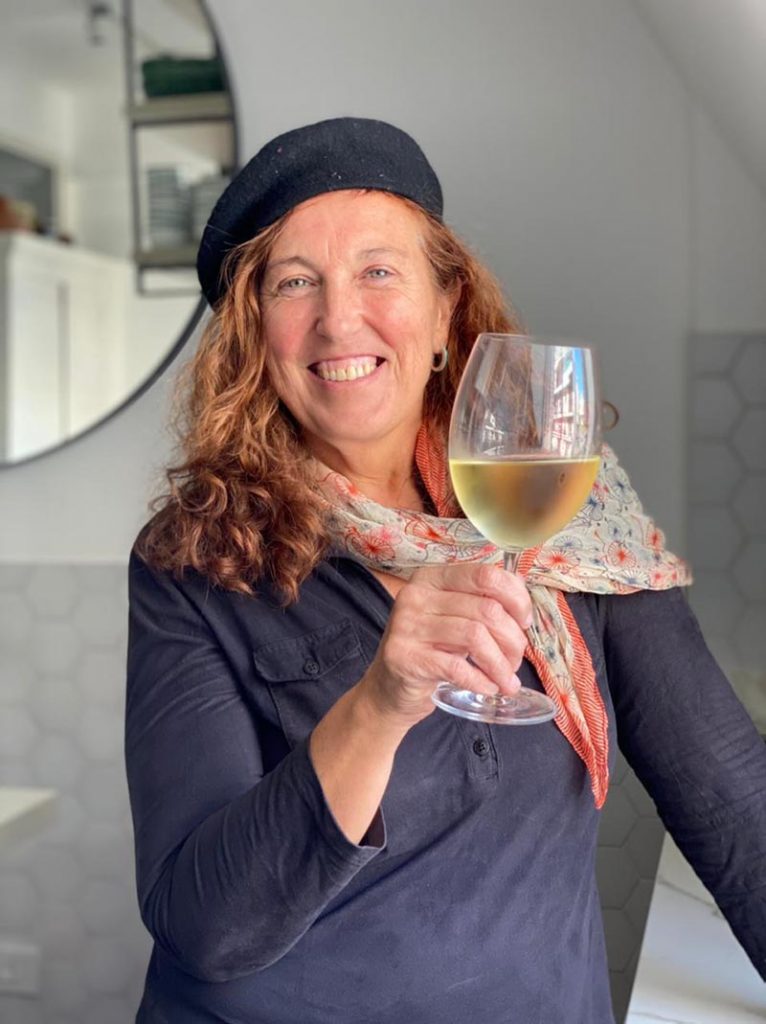
On her social networks, she can be seen cooking at fairs such as Bocas Abiertas and the Master of Food & Wine in Mendoza or the five star experience at Pristine Luxury Camps, a unique hotel in the Salinas Grandes in Jujuy. There are also accounts of her work at Hostería Rincón del Socorro, in the Esteros del Iberá in Corrientes, where she worked with Correntina women to re-evaluate and promote authentic local products and ancestral recipes, a holistic project that won the Baron B Prix de Cuisine in 2018.
We spoke to Patricia Courtois about her relationship with cooking, wine and the joys of good eating.
Interview with Patricia Courtois
How is your gastronomic work related to wine?
Generally, the people who produce wine tend to be dreamers that put plenty of their personality and story into every bottle. I offer them my services and try to express the story that each wine has to tell in every dish.
How does this interpretive process work?
It’s fascinating to witness the inner processes of the different wineries. It’s about connecting with the terroir, a word we hear a lot. Wines are an expression of their terroir, and so is my cooking. Wine is the agricultural and oenological teams, everyone who tends to the plants the year round, the harvest, the landscapes, the flowers, the animals, the vegetable garden, local, authentic produce… Everything has an effect on the wine and I try to show that in my menus. In fact, I prefer not to talk about individual dishes but more of an overall concept, what arises out of my many conversations with the leading figures at each winery.
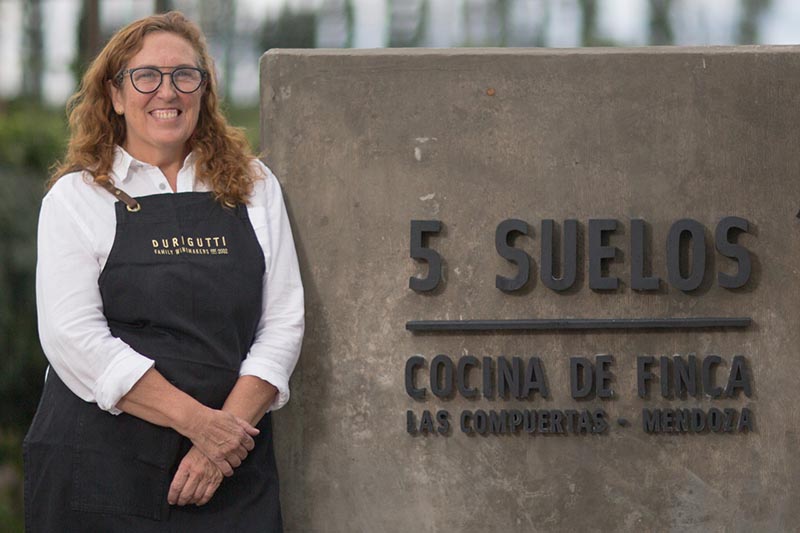
Can you describe 5 Suelos Cocina de Finca, the restaurant at Durigutti Family Winemakers?
It very much has a family atmosphere, extremely evocative of gathering round the table every Sunday with homemade wine, the celebration that comes with getting together to eat and drink good things. The dishes are happy and celebratory. We don’t serve on platters but there is a sense of the large dishes prepared by one’s grandparents, the kind that express the joy of getting together. It’s all about paying our respects to the history of wine.
Soon the restaurant will be adding a new experience that provided me with a challenge and an opportunity to learn: a tasting menu to accompany the winery’s history and wines.
It’s a wonderful project I’m doing with the sommelier Martín Krawxcyk Pardo, who is very skilled when it comes to sharing his knowledge in the gastronomic sphere. He helped me to overcome my prejudice against tasting menus. I often find them overly long or meaningless, but I’ve recently learned that one can conceive them from a different perspective and adopt a more playful approach. I hope people will be able to come and enjoy it soon.
Patricia Courtois, how do you relate to the oenological and agricultural departments at the wineries?
In the case of Colomé, it was a very intense learning experience because everywhere I go I immerse myself in the territory. That takes time because to create a menu for a winery restaurant you need to at the very least experience all four seasons which is why it’s so important to me to see the vineyards in winter, the vegetable garden in spring and also to witness the harvest.
Now that warmer days are coming (I’m in Cafayate right now) everything is bursting with life, it’s a mood that expands to encompass everything we do and it comes through in the menu. At Colomé you have the distinctive trait that everything is close to hand, everything we use is right there, it’s very authentic.
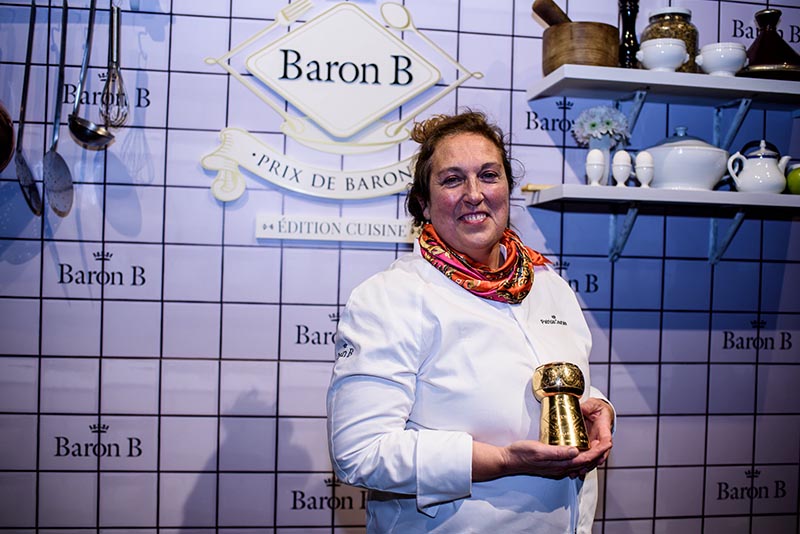
An important pillar of your working philosophy is reviving ancestral wisdom and promoting the work of local cooks…
Yes, that partly began in the Esteros del Iberá with Correntina cooks and I’m trying to bring that energy, that sense of connection, to women and cooking across the land.
There’s nothing better than accompanying a wine with products from the same area. The excitement one feels, for example, when you cook a humita – a heritage dish – in March with recently harvested corn is a celebration. On my journeys, I’ve learned that women play an important role wherever wine is made, in the produce and in the kitchens. It should be more visible, which is why I like to set up teams of women, we’re makers who have an opportunity to share knowledge across the generations, which is fundamental if we’re going to preserve this knowledge, these recipes, for posterity.
You’re working in two of the most important viticultural regions in the country, Salta and Mendoza. Do you think the gastronomic industry is expanding there?
I think that more and more wineries are regarding gastronomy as a means of expanding what they can offer visitors and that’s very important. There are concepts for every taste and for chefs it’s always a challenge to ensure we stand out among the different excellent options available.
I always say that right now, innovating means returning to our roots. I’m learning a lot from the world of wine, it’s amazing, it allows us to connect with our senses. I’m interested in everything that winemakers who experience extreme climates and conditions do. I like to contribute to projects that face significant challenges because I believe that much can be done through perseverance and wine reflects the beauty that can be found in unexpected places.

